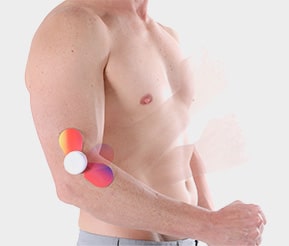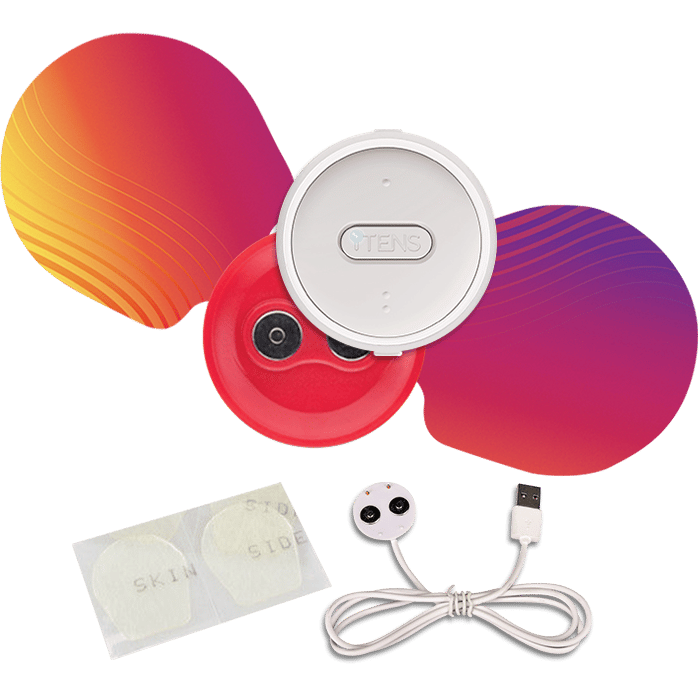Why iTENS?
Advanced Technology

Wearable and Discreet

Revolutionary

Long Lasting Gel Pads

Fully Compatible

Chronic Back Pain Alleviation

Faster Pain Relief
Medical Case Studies show:
93%
of existing TENS users prefer iTENS
91%
reported reduced pain
within 10 minutes of application
Treatable Conditions
Inflammation in the tendons that run along your outer ankle bone and the side of your foot.
Inflammation of the fluid-filled sacs that cushion joints.
A common condition that causes numbness, tingling, and pain in the hand and forearm.
Severe burning pain in a limb caused by injury to a peripheral nerve.
Pain in the area below your bellybutton and between your hips that lasts six months or longer.
Nerve damage caused by chronically high blood sugar and diabetes.
Damage to the nerves that connect the brain and spinal cord to the rest of the body.
The infection or inflammation of pouches that can form in your intestines.
Tissue that lines a woman's uterus, growing outside of the uterus.
A condition that occurs when tendons in your elbow are overloaded, usually by repetitive wrist and arm motions.
A condition in which the forearm muscles become damaged from overuse.
A condition in which the facet joints (also termed zygapophyseal joints) of the spine become a source of pain.
Aching and pain in muscles, tendons, and joints all over the body, especially along the spine.
Also called adhesive capsulitis, involves stiffness and pain in the shoulder joint.
Nerve pain that affects the area below your ribs and can be caused by several different conditions.
Commonly also known as “sciatica” is radiating nerve pain in the hip area.
Intervertebral disc or disc fragments are displaced at any level of the spine: lumbar, cervical, or thoracic.
During labour, pain is caused by the contraction of the uterus muscles and by pressure on the cervix.
Pain resulting from a strain (injury) to muscles or tendons in the back.
Pain in the lower (lumbar) portion of the back.
A disorder that causes pain in the lower back and hip which radiates down the back of the thigh into the leg.
A chronic disease that affects the central nervous system, which is the brain, spinal cord, and optic nerves.
Neuropathic pain can happen if your nervous system is damaged or not working correctly.
Disease of the joints.
Disease of the joints.
“Hardening of the arteries” that circulate blood to the body.
Nerve damage located in the peripheral nerves. Often causes weakness, numbness and pain, usually in the hands and feet.
A condition that causes pain on the bottom of the heel.
Considered a form of acute pain due to surgical trauma with an inflammatory reaction.
Spasms in small blood vessels located in your fingers and toes.
An autoimmune and inflammatory disease, where your immune system attacks healthy cells in your body.
Nerve pain from an injury or irritation to the sciatic nerve, which originates in your buttock/gluteal area.
Damage to the spinal cord that results in a loss of function, such as mobility and/or feeling.
When the synovium of a joint becomes inflamed (swollen).
An inflammation or irritation of a tendon.
When a tendon swells (becomes inflamed) after a tendon injury.
Pain in the chest.
Swelling (inflammation) of a vein.
Treatable Pain
Acute Pain
Pain that generally lasts for a short period of time, and usually disappears when the underlying cause has been treated or has healed.
Chronic Pain
Long-standing pain that persists beyond the usual recovery period or occurs along with a chronic health condition, such as arthritis.
Neuropathic Pain
Caused by damage or injury to the nerves that transfer information between the brain and spinal cord from the skin, muscles and other parts of the body.
Nociceptive Pain
A type of pain caused by damage to body tissue. Nociceptive pain feels sharp, aching, or throbbing.
Radicular Pain
A type of pain that radiates from your back and hip into your legs through the spine.











